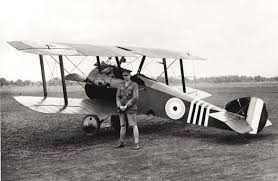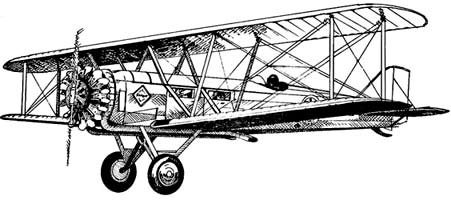History of the Invention of Aircraft
The embryo of an airplane was first introduced by Armen Firman, a Muslim scientist who lived during the Caliphate of Muhammad Amir bin Abdurrahman in Cordoba, Spain.
In the fall of 852 Armen experimented with a floating plume using a robe from a tower in Cordoba. The test runs smoothly. Armen only suffered minor injuries, because the wing of his plane was able to withstand the autumn wind blow. The history was witnessed by many other muslimam scientists, one of whom was Abul Qasim Abbas ibn Firnas, a young student scientist of Abul Hasan Ali bin Nafi '(Ziryab the black bird). Ibn Firnas was very impressed with Armen's actions, then began to research the aviation world. In 875 Ibn Firnas invented the concept of his own aircraft and experimented on the tower in Cordoba.
That afternoon in 875 Ibn Firnas invited less than twelve Cordoba peoples to gather on a hill in Andalusia, Spain, witnessing a test he called "flying like a bird" where he would plunge from a tower in a valley. To them Ibn Firnas show off the rotation of the propeller plane, then two parts of the wings of birds associated with his legs and arms. After that, Firnas climbed into the tower and then jumped. The result, Firnas fell and suffered injuries. Firnas repaired the wings of the plane, then rose again with the added height. On the second flight, Ibn Firnas managed to hover over a height of several hundred feet, spinning and soaring, as he said as "flying like a bird".
Mu'min Ibn Said, a poet who lived contemporaneously with Firnas recorded the action of Firnas with his words: The firnas fly faster than the poenix birds, when he wears his feathers in the shape of a vulture. After Ibn Firnas, the aviation experiment was conducted in 1003 by Farabi Ismail Al-Jauhari, an Iranian teacher who liked Arabic grammar. Al Jauhari used unidentified aircraft that he launched from the roof of the old Nishabur mosque in Khurasan, Turkistan. In 1162, during a crusade, Muslim soldiers had used aircraft to carry out attacks.
The Saracens (Muslims of the Crusades) stood on the Hippodrome Constantinople with a gear like a robe. Marco Polo on a journey recorded a glide action in East Asia. For Marco it was a mysterious action whose puzzle was not revealed until in the 16th century Leonardo Da Vinci tried to solve the puzzle of an airplane introduced by Ibn Firnas. Da Vinci feels locked with the mystery of the birds until the Italian genius performs surgery on the poultry that produces the flying machine design tied to a man's back.  After Da Vinci, a more modern and successful flight experiment was carried out by Hezarfen Ahmed Celebi, Turkey's most famous pilot during the Ottoman Caliphate under Sultan Murad IV. Inspired by the design of Da Vinci, by correcting some parts and the balance system, Hezarfen took an eagle lesson. After performing nine attempts, Hezarfen found the right formula for the wing of the plane.
After Da Vinci, a more modern and successful flight experiment was carried out by Hezarfen Ahmed Celebi, Turkey's most famous pilot during the Ottoman Caliphate under Sultan Murad IV. Inspired by the design of Da Vinci, by correcting some parts and the balance system, Hezarfen took an eagle lesson. After performing nine attempts, Hezarfen found the right formula for the wing of the plane.
In 1638, with a height of 183 feet from the Galata Tower near Istanbul's Bosporus, Hezarfen conducted a flight test. Hezarfen flew to Uskudar then turned to the Bosporus, and was successful! Hezarfen landed smoothly at a place in Borporus. This event was recorded by Evliya Celebi, a tourist, who later wrote his testimony in his book Seyahatname (travel Note). The prototype of the Hezarfen aircraft was 200 years later to be experimented elsewhere by the Wright Brothers in December 1903. Fifty years after Hezarfen recorded his success, his brother Ladari Hasan Celebi, discovered a manned rocket he launched using 300 pounds of gunpowder. Heavier airplane flying from the air was first flown by the Wright Brothers (Orville Wright and Wilbur Wright) using its own design plane called the Flyer, which was launched in 1903 in the United States.
In addition to the Wright brothers, noted some inventors of other aircraft that found aircraft such as Samuel F Cody who perform the action in the field Fanborough, England in 1910. As for the plane lighter than air had flown long before.
The first flight with hot air balloon found by a French citizen named Joseph Montgolfier and Etiene Montgolfier occurred in 1782, then refined a German named Ferdinand von Zeppelin by modifying the cigar-shaped balloon used to carry passengers and goods in 1900. In the following year the Zeppelin balloon harvested air transport to the Zeppelin ship disaster on a trans-Atlantic journey in New Jersey 1936 marking the end of the Zeppelin era despite being still used before World War II. After the Wright era, many aircraft experienced modifications from both design, shape and aircraft engines to meet the needs of air transportation.
![BeautyPlus_20171005111742_save[1].jpg](https://steemitimages.com/DQmUhiQXpzpGLLAayhsfVMxgXn8JR8VMRDAduJhPo2MFRiJ/BeautyPlus_20171005111742_save%5B1%5D.jpg)
The larger commercial aircraft made in 1949 was named Bristol Brabazon. Until now the largest passenger aircraft in the world made by airbus industrie from Europe with A380 aircraft.